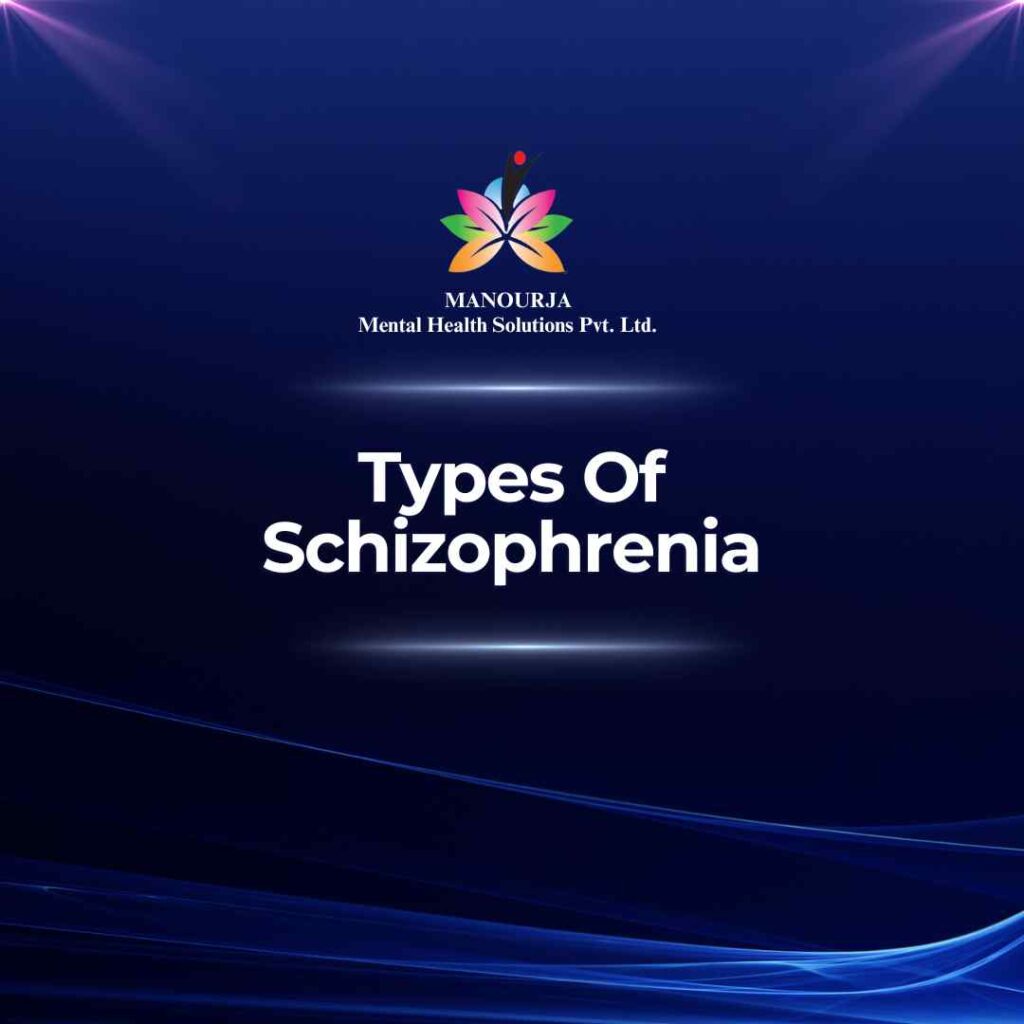Types of Schizophrenia

Previously, schizophrenia was categorized into various subtypes based on the predominant symptoms at the time of evaluation. However, these subtypes were removed from the DSM-5 (Diagnostic and Statistical Manual of Mental Disorders, Fifth Edition) because they were found to be unstable over time and of limited diagnostic utility. Nevertheless, understanding these historical subtypes can still provide insights into the various manifestations of schizophrenia.
Here’s a brief overview of these former subtypes:
This was the most common subtype. Individuals with paranoid schizophrenia primarily experienced hallucinations and delusions, especially of a persecutory or grandiose nature. Their cognitive functions and affect might have remained relatively intact compared to other subtypes.
Previously known as hebephrenic schizophrenia, this subtype was characterized by disorganized speech and behavior, as well as flat or inappropriate affect. Individuals with this subtype might have exhibited silly and immature behavior, and their thinking was often disorganized and incoherent.
This subtype was marked by disturbances in movement. Affected individuals might have shown motoric immobility or excessive, purposeless motor activity. Catatonic symptoms also included extreme negativism, mutism, peculiarities of voluntary movement, and echolalia or echopraxia (mimicking another’s speech or movements).
Undifferentiated Schizophrenia
This subtype was used when an individual’s symptoms did not clearly fit into the other categories or when there was a mixture of symptoms from different subtypes without one predominant set of features.
In residual schizophrenia, individuals had a history of at least one episode of schizophrenia but were currently not exhibiting prominent delusions, hallucinations, disorganized speech, or severely disorganized or catatonic behavior. However, they might still display negative symptoms, such as reduced emotional expression or lack of motivation.
Current Understanding and Diagnostic Approach
In the current DSM-5, schizophrenia is recognized as a spectrum, where symptoms can vary greatly between individuals, and the subtype classification is no longer used. Diagnosis now focuses on the severity and combination of symptoms rather than fitting them into subtype categories. This change reflects an understanding that schizophrenia symptoms can fluctuate and vary over time, making static categories less useful in clinical practice.
Symptoms are broadly categorized into positive symptoms (such as hallucinations and delusions), negative symptoms (such as apathy and lack of emotion), and cognitive symptoms (such as impaired memory or executive functioning). Treatment and management strategies are tailored according to the severity and types of symptoms present, along with individual needs, rather than subtype categorization. This approach aims to provide a more personalized and dynamic understanding of schizophrenia, enhancing treatment effectiveness and patient care.
At MANOURJA, we believe in the transformative power of counseling. Our experienced therapists offer a safe and supportive space where you can explore your thoughts, emotions, and challenges. Through personalized counselling sessions, we’ll work together to develop coping strategies, build resilience, and achieve lasting positive change. Discover the path to a healthier, happier you with MANOURJA counselling services.
MANOURJA Rehabilitation Services
At MANOURJA, we’re dedicated to helping you in rebuild your life, after difficult times. Our rehabilitation services focus on understanding what you need to move forward, whether you’re recovering from addiction, trauma, or any psychological – social challenges. We create personalized plans, that are all about helping you, regain your strength and find hope again. With a caring team by your side, you’ll have the support to make real progress and take steps toward a brighter, healthier future.
